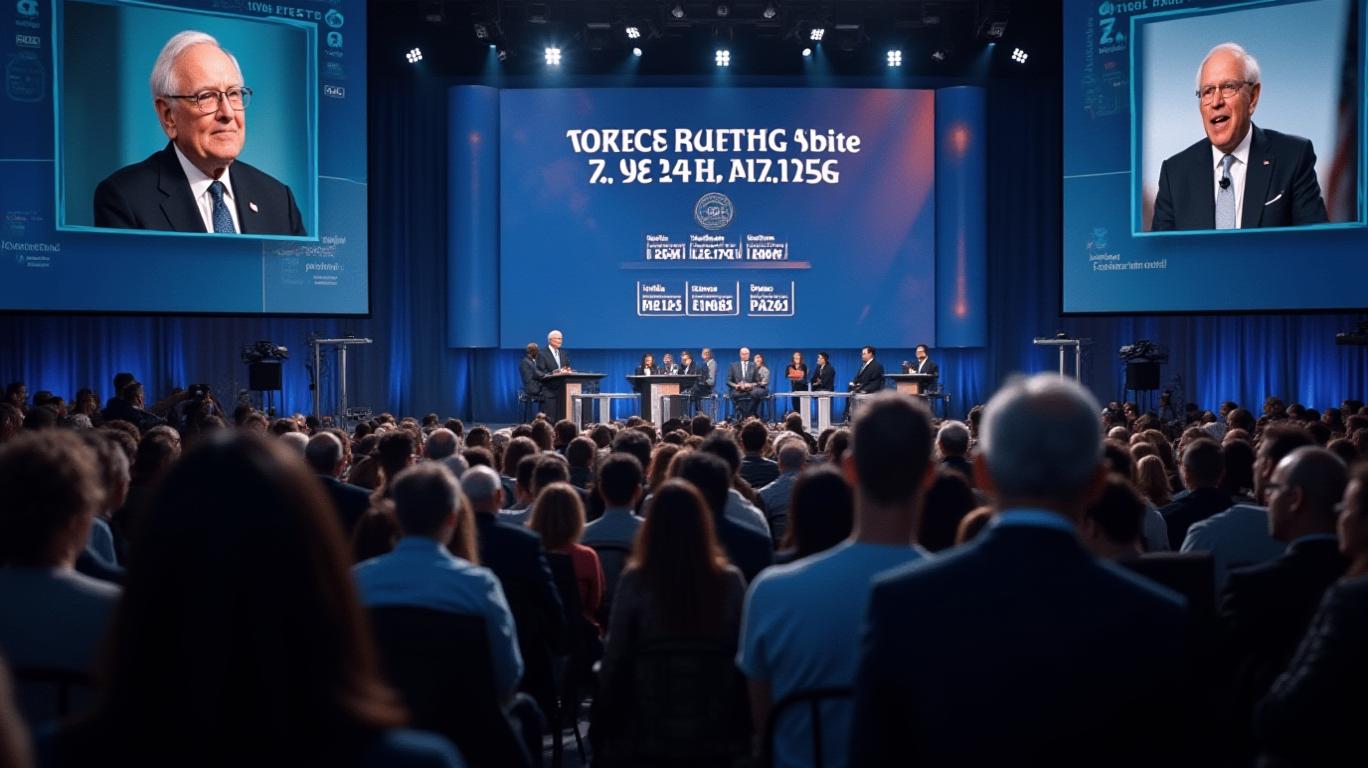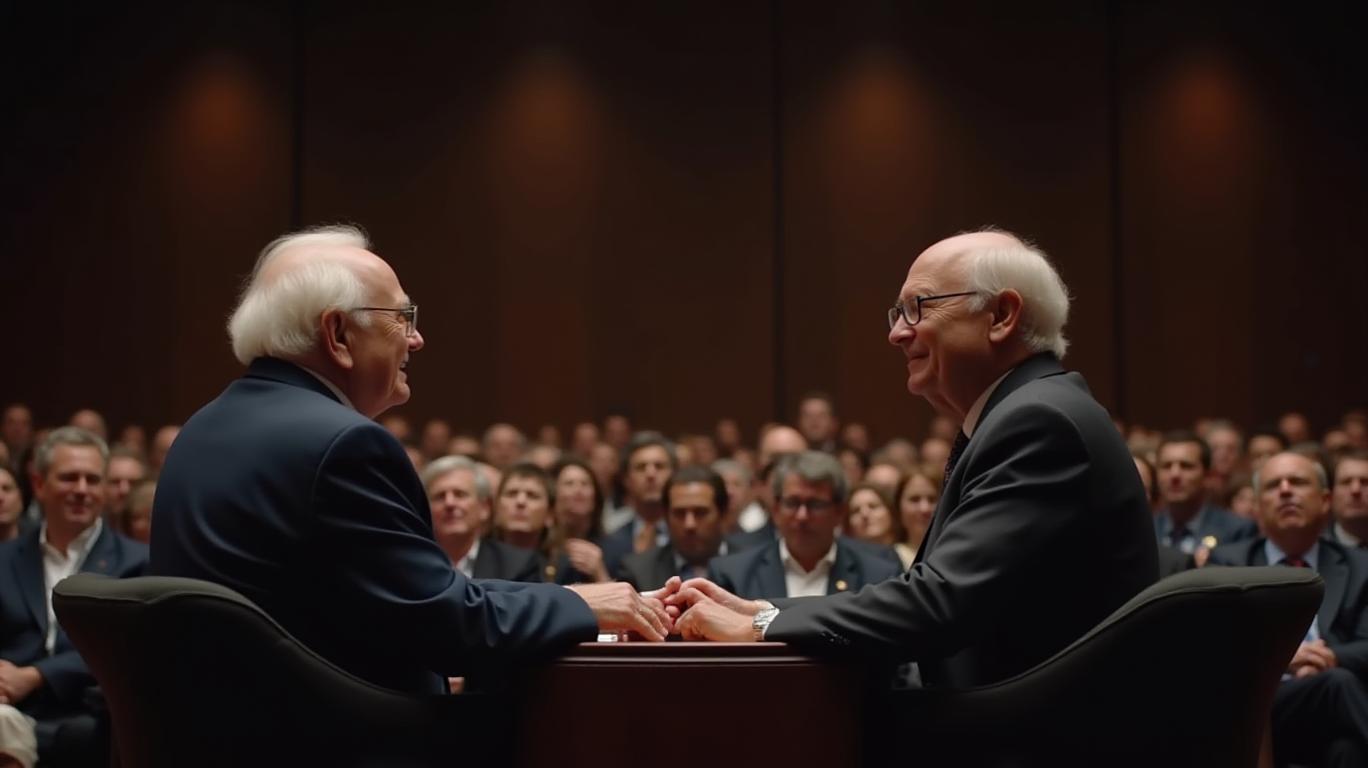Berkshire Hathaway’s Leadership Transition and Q1 Results: A Crossroads for the Oracle of Omaha?
The 2025 Berkshire Hathaway shareholder meeting in Omaha marked a historic inflection point for the conglomerate. Warren Buffett’s announcement that he would step down as CEO by year-end, ceding the helm to Vice Chairman Greg Abel, signaled the end of an era. Meanwhile, the company’s Q1 earnings report revealed both operational resilience and strategic challenges. Here’s what investors need to know.

The Leadership Transition: A Smooth Handoff or New Risks?
Buffett’s retirement, confirmed at the May 3 shareholder meeting, has been anticipated for years. Yet the formal handover to Abel—whose expanded role now includes full authority over investments—has reignited debates about Berkshire’s future.
- Key Data Point: Berkshire’s cash reserves hit a record $347 billion by Q1 2025, up 4% from year-end 2024. This liquidity buffer positions the company to capitalize on opportunities under Abel’s leadership.
- Quote: “The transition to Abel is more about continuity than change,” said Morningstar analyst Sarah Mary, noting that Abel has managed Berkshire’s non-insurance businesses for over a decade.
However, uncertainties linger. Ajit Jain’s role as Vice Chairman of Insurance Operations remains unaddressed, and Buffett admitted there’s “nobody who can replace him.” Analysts like UBS’s Mark Heppenstall warn that succession gaps could pressure the stock unless clear plans emerge.
Q1 Earnings: Missed Expectations, But Resilience in Core Businesses
Berkshire reported a 14% year-over-year decline in Q1 operating earnings to $9.64 billion, falling short of forecasts. The miss stemmed from two non-operational factors:
1. A $1.1 billion loss from Southern California wildfires, which slashed insurance underwriting profits by 48.6%.
2. A $713 million hit from a weakening U.S. dollar.
Yet core divisions thrived:
- Energy: Earnings jumped 52% to $1.1 billion.
- BNSF Railway: Maintained steady performance amid geopolitical volatility.
Investors should note that 90% of Berkshire’s $5.04 billion unrealized equity losses stemmed from reduced stakes in Apple and Bank of America—a strategic shift to avoid tax liabilities under Biden’s policies. “This isn’t a failure of strategy,” said Buffett. “It’s a tax optimization move.”
Geopolitical Risks and the $347 Billion Question
Buffett’s criticism of tariffs as “an act of war” underscored ongoing risks to Berkshire’s manufacturing and retail divisions. Yet the company’s defensive exposure—stakes in Coca-Cola, Chevron, and utilities—appears designed to weather macro instability.
The bigger question is how Abel will deploy the $347 billion cash hoard. Analysts speculate he might prioritize share buybacks or dividends—a departure from Buffett’s aversion to both. “Abel’s ability to redeploy this cash effectively will determine whether Berkshire can sustain its premium valuation,” warned Morningstar.
Conclusion: Navigating the Post-Buffett Era
Berkshire Hathaway’s stock rose 19% year-to-date despite the Q1 stumble, outperforming the S&P 500’s -10% decline. This reflects investor confidence in the company’s long-term fundamentals and Abel’s preparation for leadership.
However, the path forward is fraught with challenges:
- Succession execution: Filling the void left by Ajit Jain’s eventual retirement will test management’s cohesion.
- Cash utilization: Deploying $347 billion without Buffett’s hands-on oversight requires bold decisions.
For now, the record cash reserves and Abel’s proven track record offer reassurance. Investors should watch closely how the new CEO navigates volatility—a task that will define Berkshire’s next chapter.
In short, while the post-Buffett era brings uncertainty, Berkshire’s structural strengths and strategic flexibility position it as a resilient investment—if Abel can replicate its founder’s knack for turning crises into opportunities.


_442a2dcc1749832873286.jpeg)
_e68fac6d1749831664430.jpeg)






